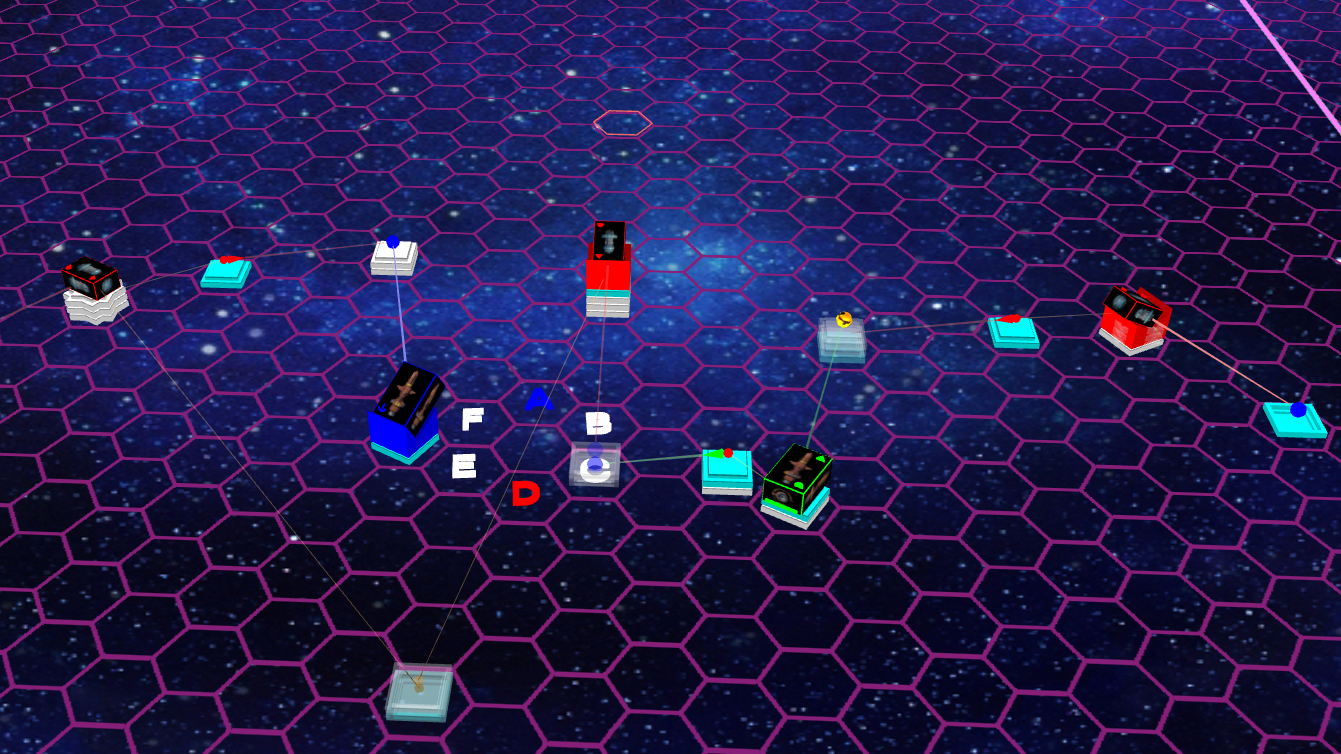
Newton’s Cradle is the newest setting in Ad Astra Games’ Squadron Strike line of sci-fi space combat games. For those unfamiliar, designer Ken Burnside has been using this combat system as the basis for multiple settings for decades, all featuring the incredibly unique AVID (Attitude Vector Information Display) system to manage the orientation and movement of ships in a 3D space. And this game is fully three-dimensional, not handwaved or abstracted in any way. There really isn’t anything like it that I’ve played. The system itself is akin to an engine that can host anything that features 3D maneuvering (like the prolific DOOM engine of yore) and easily adapts to match any sci-fi setting’s level of “realism” from Star Wars’ flashy dogfights-in-space, covered by the original Romance of the Seven Realms setting which even has magical Élan powers, to The Expanse’s deadly mathematics. This particular release, Newton’s Cradle, actually takes place within our solar system and uses “Mode 2” movement, which is the most physically realistic of the modes, where your ships will continue traveling in a straight line, regardless of the ships’ orientation, if they don’t provide any thrust. So if you’re a fan of that type of setting, this is probably the best possible way to get your feet wet in a long-running line of games.
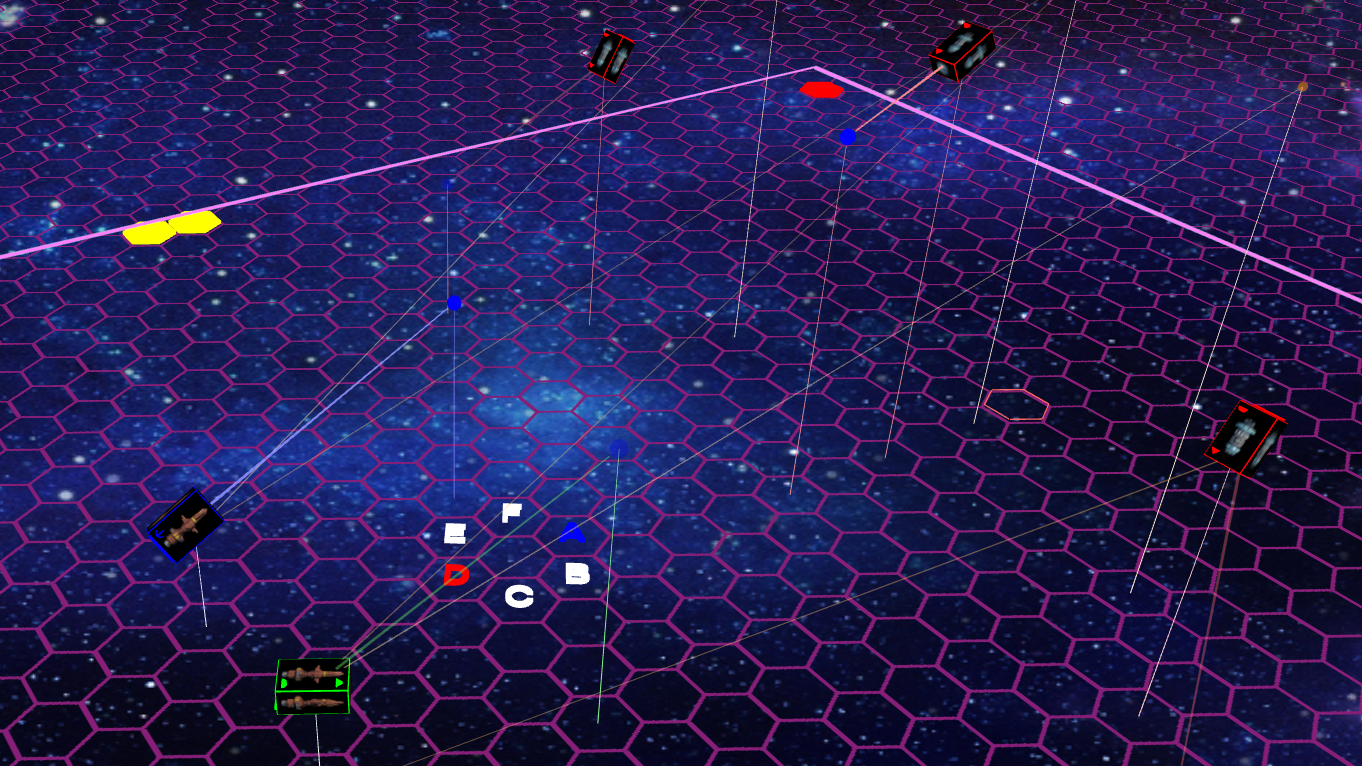
First, a quick overview of the Squadron Strike system itself (Mode 2 specifically). This won’t be all-inclusive—I’m saving that for a full review of the game—and players already familiar can skip ahead to the Newton’s Cradle-specific stuff. The game plays over a series of rounds until the scenario’s victory conditions have been met, which can vary, but for a first play is likely a simple deathmatch. These phases are typically players either simultaneously plotting things or resolving ships’ pre-plotted actions in order (the order itself doesn’t matter, since all the actions occur simultaneously). To start a round, each player rolls to see if their crew is panicking and firing at whatever enemy is closest to them this round, then players get to mess with the AVID system to adjust both their ships’ orientation and applied thrust, as well as a few other possible adjustments. Once done, players continue into the Movement Phase and move the ships themselves to their “End of Turn tents” before moving these EoT tents to their new expected trajectory. This helps make it clear where a ship is likely to be in the next round (and, in Mode 2 movement, this isn’t subject to very much change as it takes time to course-correct). Any fired torpedoes also get to move in this round, but those are very simple and pretty automated for better or for worse.
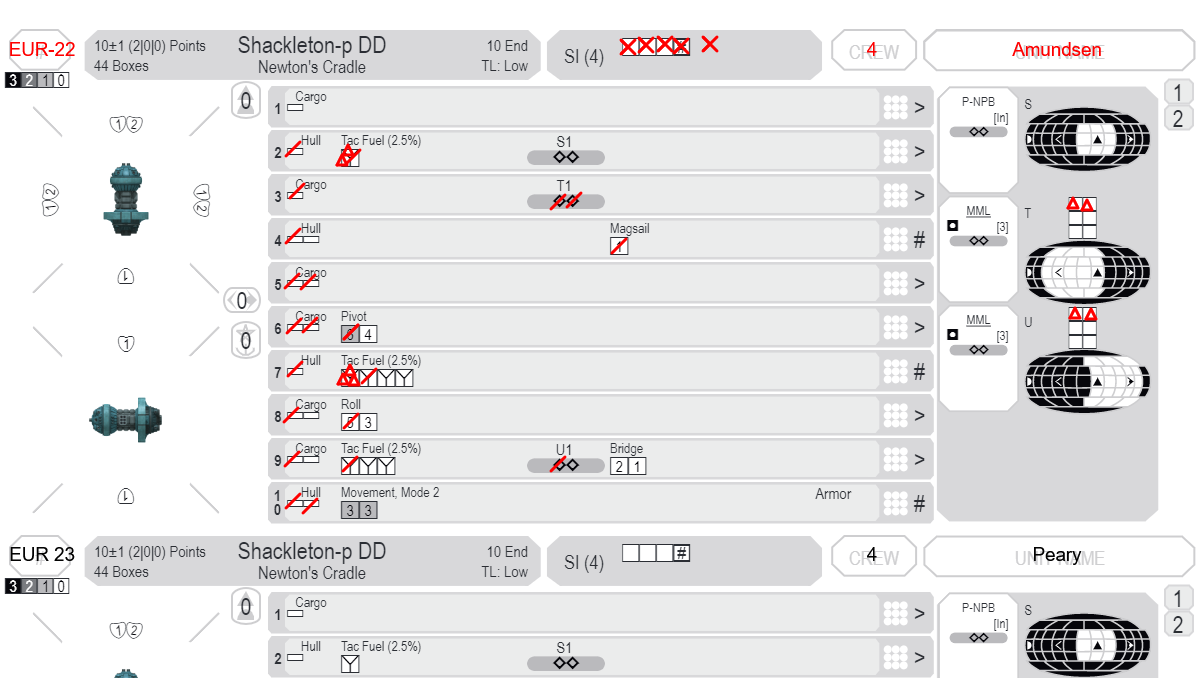
In the Combat Phase, players secretly write down their “firing orders”, which indicate which weapons are firing at which enemies, along with the necessary stats (this helps keep things flowing later, so players don’t have to look back and forth between stat sheets when rolling dice). When everyone is done, these are resolved by a series of dice rolls for accuracy, damage, and damaged location. Squadron Strike handles damage allocation incredibly well, able to support a wide variety of sci-fi defenses, from shield bubbles to ablative plating, as well as allowing damage to be dealt to specific systems (such as taking out a weapons battery) without getting super crunchy or inducing any headaches. The X-Wing Miniatures Game abstracted this to the damage deck, but Squadron Strike keeps all the damage very ship-specific (i.e. no evasion penalties on ships without much capacity for that in the first place, as my Decimators were prone to) while being very nearly as simple to determine and track. Larger ships can mitigate this damage by allowing players to reassign damage dealt to particularly valuable systems and, of course, ships can often attempt to repair these systems during the Crew Actions Phase.
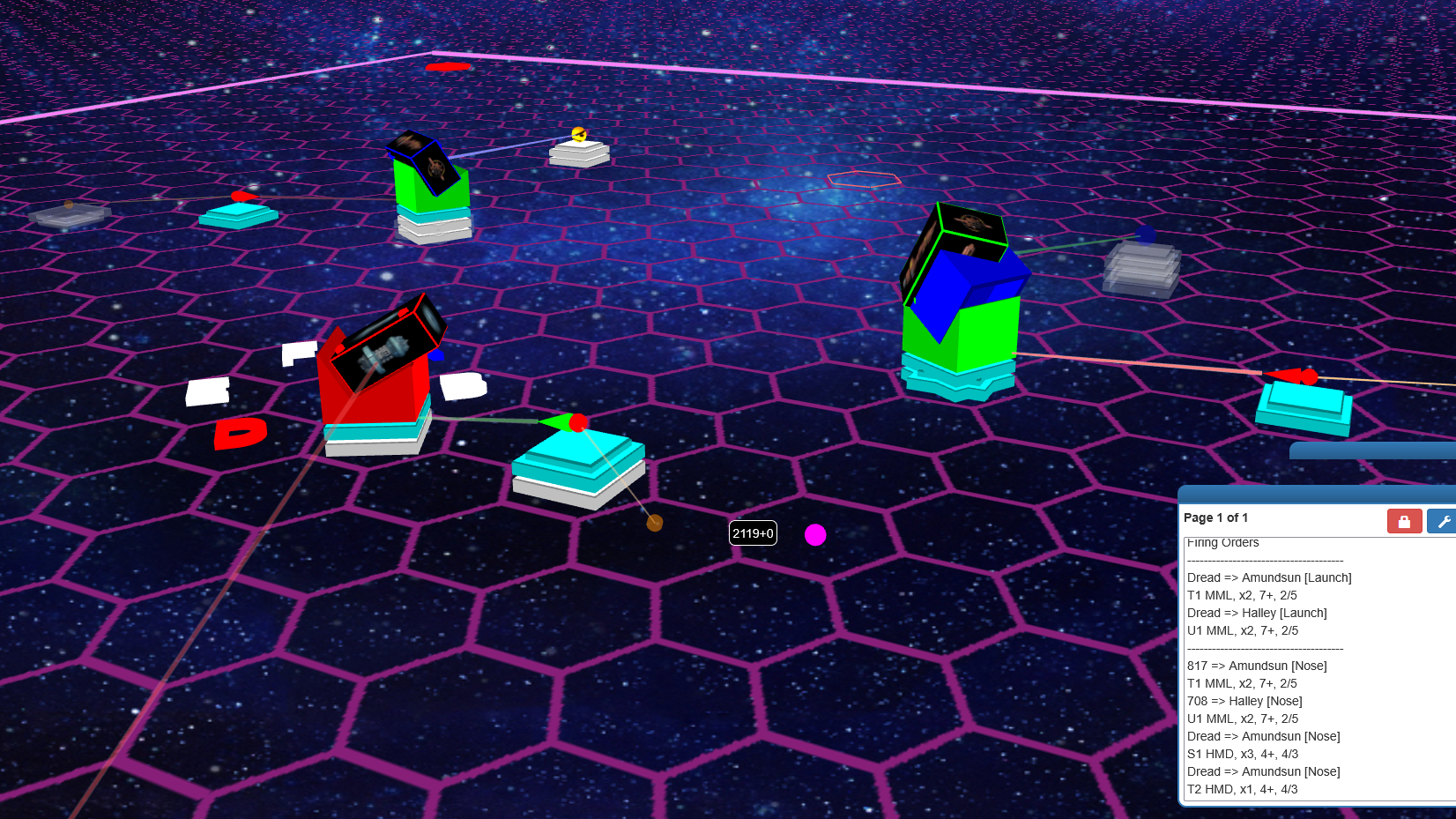
All of this is tracked on the ships’ data sheets or Ship’s System Displays (SSDs), which might look like a lot at first glance but are actually quite simple and are totally comprehensive for running a ship, even including a turn reference. The turn reference can actually be a necessity, as Squadron Strike supports multiple Modes of movement being present in a battle by different ships; they’ll just each resolve the movement phase a bit differently.
The AVID system I mentioned before can similarly appear very obtuse initially. While it does take more getting used to than the SSDs, there’s a wonderful (and free) digital assistant app that players can run on any device, which will make managing the system a breeze. You’ll still likely make mistakes in your first flight as you get your space legs, but what Nugget hasn’t?
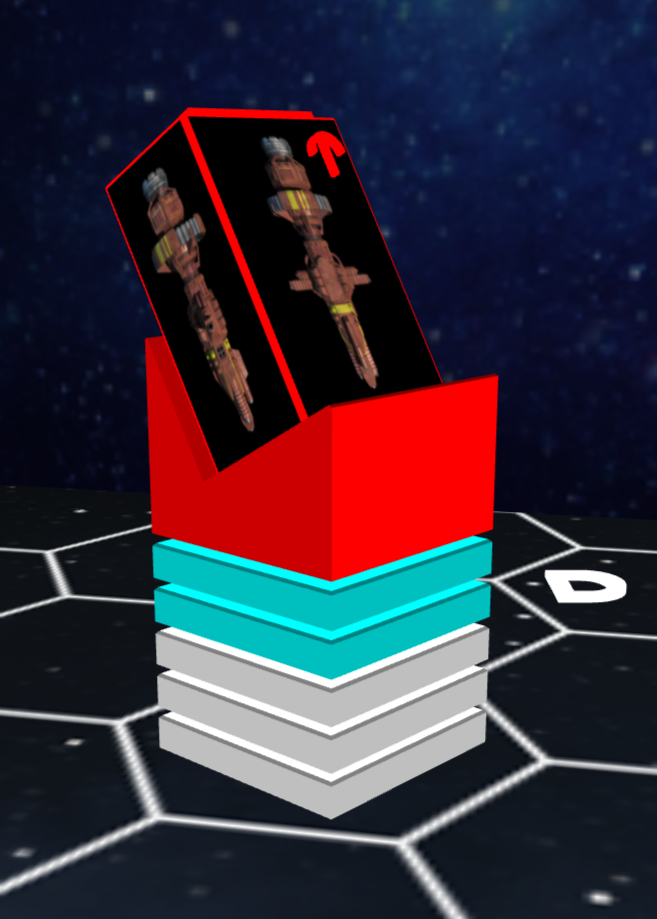
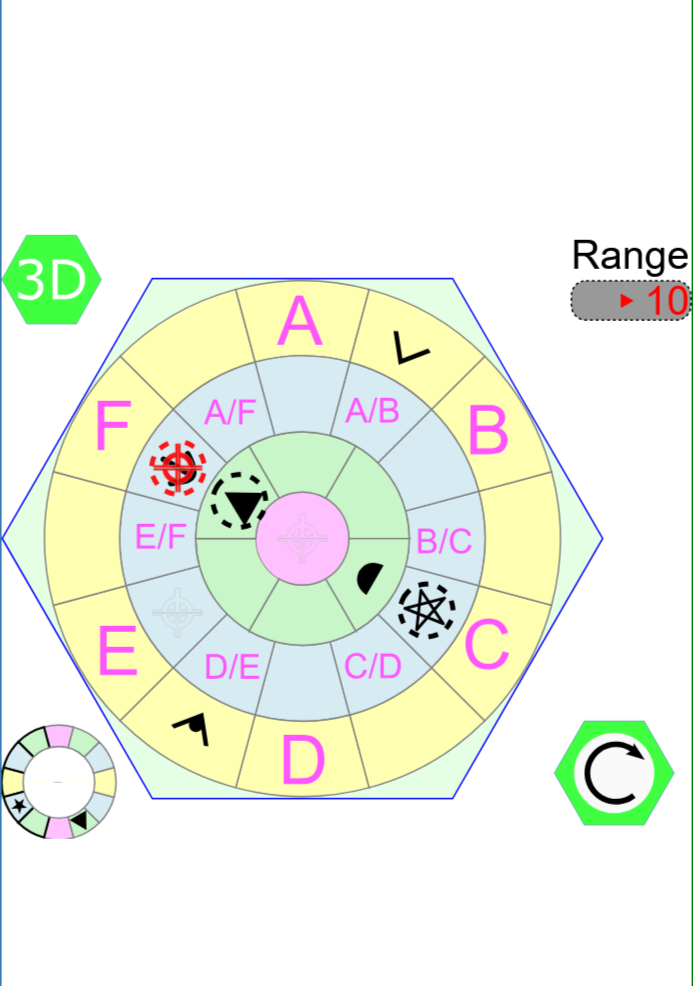
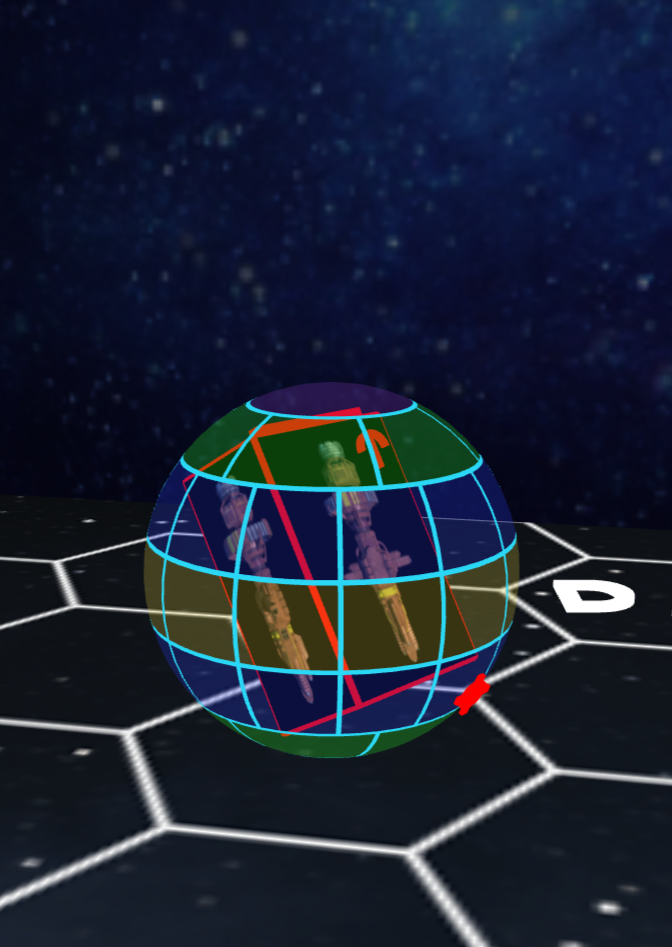
From left to right: A ship as it appears on the board point downwards, the same orientation represented in AVID, a visualization of the AVID bubble around a ship
Now, the shiny new bits. One of the first things that needs to be considered in hard-science space flight is fuel. Ya can’t go anywhere without it, so it’s loaded up onto the ships in Newton’s Cradle and spent whenever your ships apply thrust. That’s easy enough to manage, but force (or thrust) equals mass times acceleration, and fuel itself has mass. So, as your ship burns through the fuel onboard, it gets lighter, and the remaining fuel actually gets more efficient at providing the same amount of acceleration since less force is required. Luckily, players don’t need to calculate or even think about the mechanics of that at all; it’s already printed on the SSDs themselves, with fuel boxes being divided up further after the initial boxes are depleted. This is a great example of how most of the crunchy bits are handled well before players start unboxing the game, so the gameplay itself can flow smoothly while maintaining plenty of thematic mechanics.
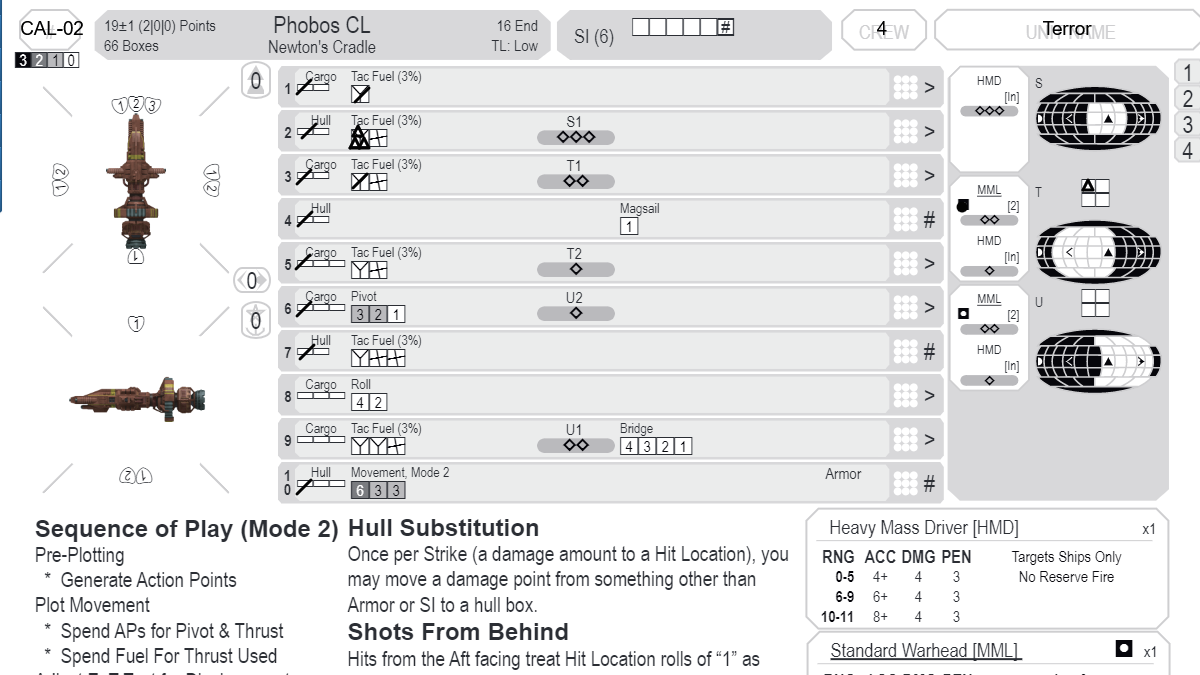
Each Squadron Strike setting features its own slew of weaponry and defenses, with Newton’s Cradle being no different. The major players here will be Mass Drivers, available in both Light and Heavy varieties, and Missiles in various shapes and sizes. The Mass Drivers are pretty accurate with decent range, but more importantly, they consistently pack a punch with 3-4 base and a bit of penetration to roll on top of that. Armor and hull aside, the ships included have a Structural Integrity of around 5, so it wouldn’t take too many hits from these, and you’ll tear up systems along the way. If that wasn’t enough, these ships can also carry a customizable missile loadout, providing options for enhanced accuracy against fast-moving ships or dealing some explosive fragmentary damage.
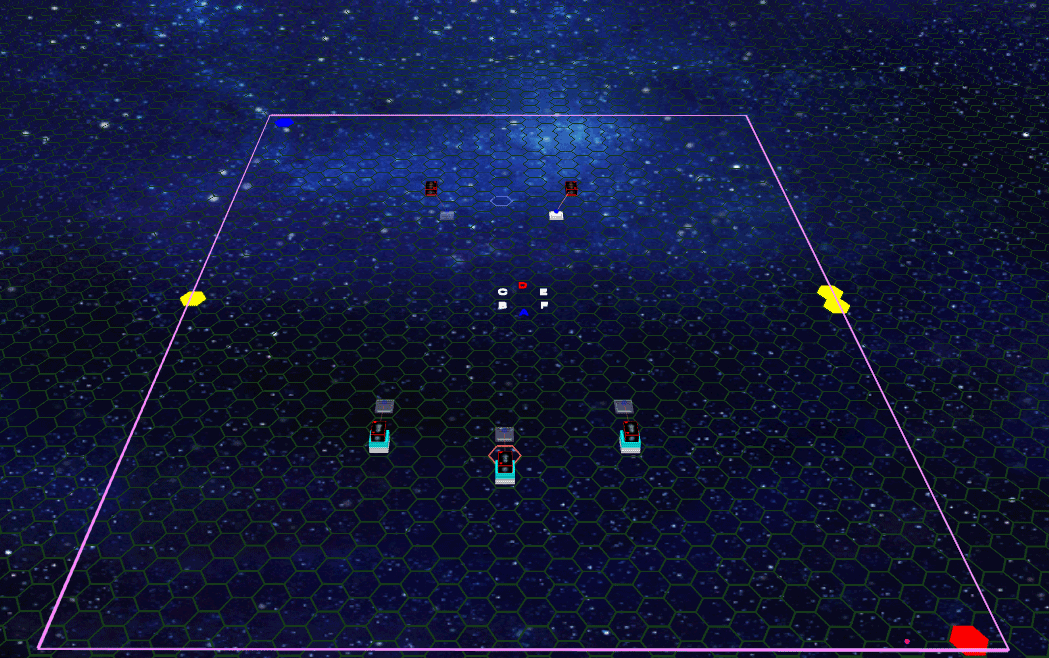
I’ve mentioned the movement system already, but I want to better explain how Mode 2 feels once you’ve got the hang of it. Fans of The Expanse may recall a scene where the Rocinante is hauling ass away from its adversary, but whips around in a full 180 to fire a shot off before continuing its spin back to applying full thrust away from the pursuer.

This is absolutely something you can pull off in Newton’s Cradle, as the vector-based movement system doesn’t care which direction your ship is pointing (again, unlike X-Wing, where everything flies more similarly to planes dogfighting, which is still covered in Squadron Strike as Mode 1). I will admit that I did not pull off anything quite so impressive in my first game, as I was still getting used to Mode 2 myself. But even watching my ship turn into a hole-riddled mess turned fireball was fun, and I look forward to trying out more of the setting.
As an added bonus, the Newton’s Cradle box will include a separate wargame board and rules for Wung Jian's War, which takes place in the same setting. This wargame is fully 1:1 compatible with Squadron Strike, so after moving your forces around on the tactical map, you can resolve combat with a game of Squadron Strike before returning to the tactical overview. While it’d be one hell of a time commitment, I’m sure it’d be an experience like no other.
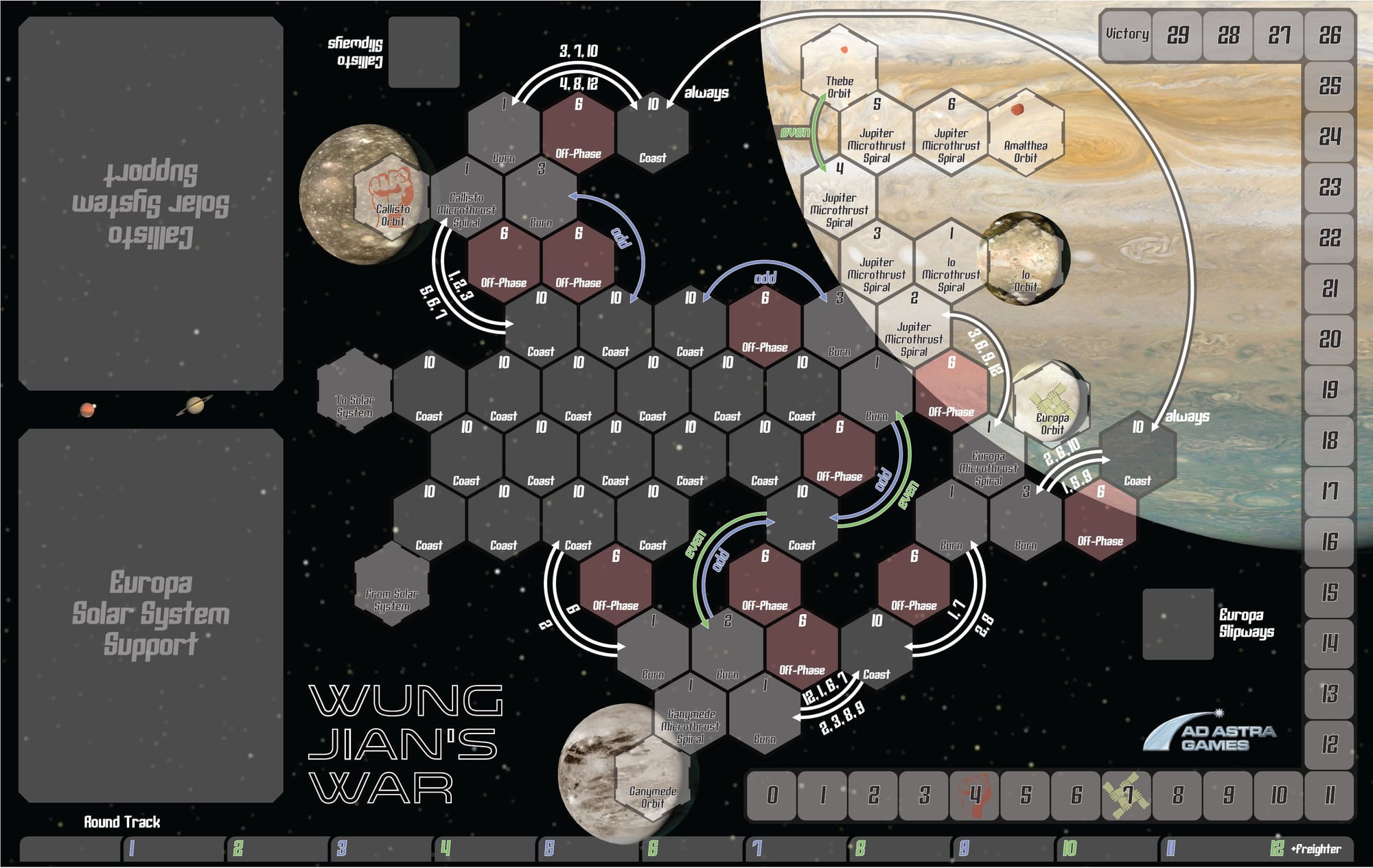
Interested players can pre-order their copy of Newton’s Cradle here: https://www.adastragames.com/products/newtonscradle. New players too eager to wait before trying the system are also in luck, because the publisher is currently running a sale on the complete PDF bundle for Squadron Strike through this weekend: https://www.adastragames.com/products/squadron-strike-second-edition-complete-pdf-bundle. The gameplay images featured use Ad Astra Games' online client, which makes gameplay incredibly smooth once everyone knows how to play on top of allowing anyone to try out one of the learning games organized via their Discord.
